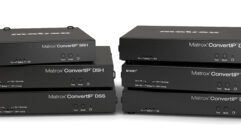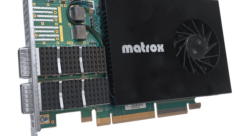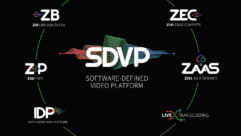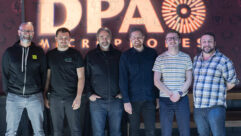Who Will Own the Network?
Jul 19, 2010 5:12 PM,
By Cynthia Wisehart
I don’t know how many church AV volunteers actually attended InfoComm, but their presence was strong in spirit. When it comes to piloting an AV system, simplicity is in. But not just any simplicity—simplicity the way an iPhone is simple. AV amateurs, especially the younger ones who so often man the mixer, may be unfamiliar with the traditional AV skillset, but they know their way around an IP network.
For example, look at the way PreSonus is redefining digital simplicity with its StudioLive performance and recording mixers (24x and 16x). PreSonus is not unique in hybridizing hardware and software mixing and recording, but they have thought hard about a price-point segment that may need this kind of modern thinking the most. The StudioLive mixers are positioned for the small club, small church, small bands, small corporate—small anything. Since the mixers can be daisy-chained, there’s also a way to go midsize. More importantly, there is a mindset at work here (as elsewhere in the industry) that understands the power of FireWire and software for users who are digital-savvy but not AV-savvy.
This demographic may never have the hands to mix like a maestro; they won’t memorize and master inscrutable layers of menus as if they were building new nerve synapses into their brains, but they can right away understand why it makes sense to be able to simply record everything all the time just in case. They can leapfrog into applications that in the past would have only been available to a much higher skillset.
Also by leveraging FireWire, PreSonus acknowledges that users are already quite advanced in the way they accumulate, manage, and distribute content via their various iDevices. The company has attempted to balance the strengths and vocabulary of analog mixers not by simply duplicating via digital but actually weaving in the culture and know-how that’s out there beyond the walls of AV.
And just as the digital culture is redefining simplicity, it is also redefining complexity. For example, consider the ambitious gauntlet-throwing that Crestron put on with the announcement of what amounts to an network operating system for AV.
The idea is that in the coming decade, someone will have to own the network that AV shares with IT, HVAC, building automation, lighting, etc. Imagine building systems becoming interconnected—a “spoke-and-hub” image, says Crestron’s Jeffrey Singer. Who will be the architect of the hub? “Why not the AV guy?” he asks. Certainly Cisco would like it to be the IT guy (or gal). The building automation companies will take a shot. The IP telephone guys, even. “Who,” he asks, “is qualified to design and manage what customers will eventually want, an integrated network for all the things they want to control, serve, monitor, and service?” The answer is, “No one yet.” “But the AV guys are closest,” Singer dares to assert, because AV engineers have been integrating audio, video, lighting, and environmental control for years—albeit with proprietary networks. What if we could bridge that knowledge into the digital mainstream? We already know how to deal with the signals; we already understand the hardest part. Now if we can just figure out how to do the easy part.










